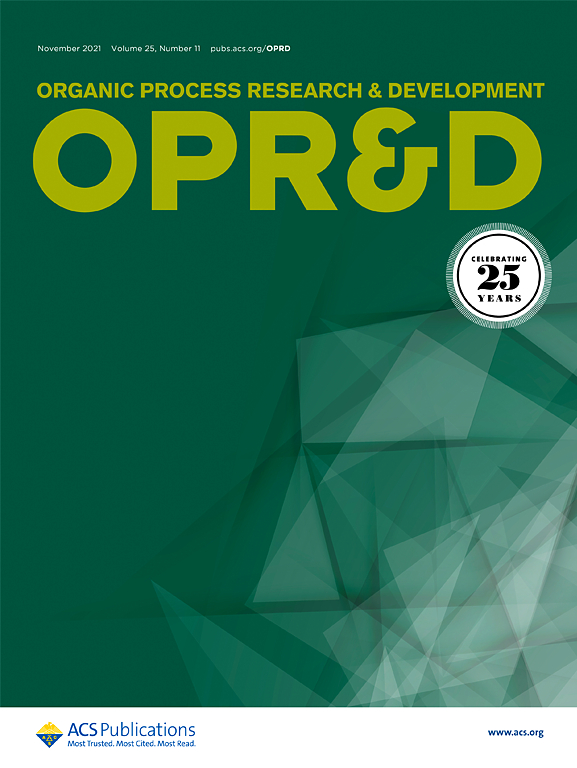开发 TRPA1 抑制剂 GDC-6599 的第一代立体可控制造工艺
IF 3.5
3区 化学
Q2 CHEMISTRY, APPLIED
引用次数: 0
摘要
我们报告了 TRPA1 抑制剂 GDC-6599 (1) 的适合目的、立体可控和无色谱的第一代生产工艺,以实现首次人体临床试验。该工艺的关键步骤包括连续的 KRED 介导的不对称酮还原、亲核氰化、1,2,4-噁二唑形成和后期的嘌呤酮 N-烷基化。该 13 步工艺成功制备了 4.39 千克 GDC-6599 (1),总收率为 11%,HPLC 纯度为 99.6A%,ER 值为 99.9:0.1,DR 值为 99.9:0.1。本文章由计算机程序翻译,如有差异,请以英文原文为准。


Development of a First-Generation Stereocontrolled Manufacturing Process of TRPA1 Inhibitor GDC-6599
We report a fit-for-purpose, stereocontrolled, and chromatography-free first-generation manufacturing process for GDC-6599 (1), a TRPA1 inhibitor, to enable first-in-human clinical trials. Key steps in the process include consecutive KRED-mediated asymmetric ketone reductions, nucleophilic cyanation, 1,2,4-oxadiazole formation, and late stage purinone N-alkylation. The 13-step process successfully produced 4.39 kg of GDC-6599 (1) in 11% overall yield with 99.6 A% HPLC purity, >99.9:0.1 er, and >99.9:0.1 dr.
求助全文
通过发布文献求助,成功后即可免费获取论文全文。
去求助
来源期刊
CiteScore
6.90
自引率
14.70%
发文量
251
审稿时长
2 months
期刊介绍:
The journal Organic Process Research & Development serves as a communication tool between industrial chemists and chemists working in universities and research institutes. As such, it reports original work from the broad field of industrial process chemistry but also presents academic results that are relevant, or potentially relevant, to industrial applications. Process chemistry is the science that enables the safe, environmentally benign and ultimately economical manufacturing of organic compounds that are required in larger amounts to help address the needs of society. Consequently, the Journal encompasses every aspect of organic chemistry, including all aspects of catalysis, synthetic methodology development and synthetic strategy exploration, but also includes aspects from analytical and solid-state chemistry and chemical engineering, such as work-up tools,process safety, or flow-chemistry. The goal of development and optimization of chemical reactions and processes is their transfer to a larger scale; original work describing such studies and the actual implementation on scale is highly relevant to the journal. However, studies on new developments from either industry, research institutes or academia that have not yet been demonstrated on scale, but where an industrial utility can be expected and where the study has addressed important prerequisites for a scale-up and has given confidence into the reliability and practicality of the chemistry, also serve the mission of OPR&D as a communication tool between the different contributors to the field.

 求助内容:
求助内容: 应助结果提醒方式:
应助结果提醒方式:


